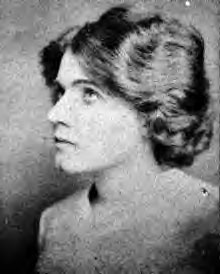Our Stars
I just read film critic Ty Burr's Gods Like Us: On Movie Stardom And Modern Fame. It's fascinating to contemplate that the idea of movie stardom, which didn't exist a little over a century ago, has become part of our everyday lives, and also has changed through the years.
At the start, movies existed to show motion, not particular people. Soon filmmakers started telling stories, and the public wanted to know who these people in the stories were. But companies were promoting themselves, not the people (not clear if they could be called "actors" yet) in their product. The first star became known as The Biograph Girl, for her company. She jumped ship and went to the newer exhibitors (who would eventually take over the industry), who were more than happy to put out her name, Florence Lawrence. They also started creating publicity that wasn't completely accurate--so that started from the beginning.
Soon there were major stars, creating a sort of worldwide celebrity that was unheard of. They were people who filled a niche that no one knew needed to be filled. So by 1920 the three biggest stars--Charlie Chaplin, Mary Pickford and Douglas Fairbanks--were famous names, but also meant a specific character to the public, the little tramp, America's sweetheart and the great swashbuckler. No one had seen this sort of adoration. When young star Rudolph Valentino, who symbolized the Latin Lover, died in 1926, there were outpourings of grief that not even heads of state could expect.
There were also scandals, such as the rape accusations against Fatty Arbuckle. It destroyed his career, but the titillation and finger-wagging became as much as part of film fandom as idolization. Meanwhile, some of the new celebrities discovered there wasn't that much to being a star. Everyone believed things about them, but their lives were the same--they weren't those characters they portrayed up on the screen. And the fans would grow tired of them if they didn't watch out. Even before the silent era was over, some stars ended up dying by their own hand.
There were many major stars in the silent era--Gloria Swanson, Norma Talmadge, John Gilbert--but then sound came in and changed everything. It became more personal, even brought some stars down to earth, now that they could talk to us. The insinuating Mae West, the virile Clark Gable, the suave Cary Grant, the tough Jimmy Cagney. And moguls understood, in ways they hadn't always before, that running a studio meant creating and maintaining stars, including a solid publicity department.
The system worked for a couple decades, but America was changing. World War II took away some of the glamor, and the Supreme Court broke up the studios. There was a new movement in acting, starting in theatre but spreading into film. No one personified this more than Marlon Brando. A sexy hunk, he was also a fine actor whose naturalism made everyone else seem fake. And as a star, he didn't play the game. Which was itself a new game. Now new stars didn't have to pretend to be someone they weren't. In fact, whereas old stars had to play to fans, new stars could act surly and seem more authentic.
The very idea of fame changed in the 50s and 60s when Elvis and then the Beatles came to the fore. (The book is mostly about movies, but Burr also discusses other types of fame--I think the book would be stronger if he stuck to the film world.) And as the old studio system died, and the Production Code jettisoned, the oldest rule of all--that stars had to be goodlooking--didn't even apply. Dustin Hoffman, in The Graduate--a role that almost went to pretty boy Robert Redford--became a representative of his generation. He'd go on to a lengthy career as, essentially, a character actor who starred in films. Others would follow, combining the commitment (and antics) of Brando without the matinee idol looks--Pacino, Nicholson, Hackman, etc.
There was a return to glamor, however, in the 80s. Part of it was America saying it wanted fun over substance (this was a turn in movies, though Burr sometimes plays up the political changes too much--even in cinema it's easy to overstress the difference between movies in the 70s and 80s). But even now, the new stars were wised up. Harrison Ford was handsome, but grumpy. Arnold Schwarzenegger winked at his audience.
Burr goes on into the last twenty years, listing literally hundreds of stars and the movements they're part of, but I'm not sure if he, or anyone, has a clear enough perspective for fame in the internet era. But up until then, the book is a fascinating look at how movies and (to a lesser extent) other media consistently changed the very idea of fame in the last century.




2 Comments:
That Flo looks pretty hot . . .
Florence was the first movie star and one of the first to learn of the toll it took. By the 1920s she was washed up and in the 1930s she took her life.
Post a Comment
<< Home